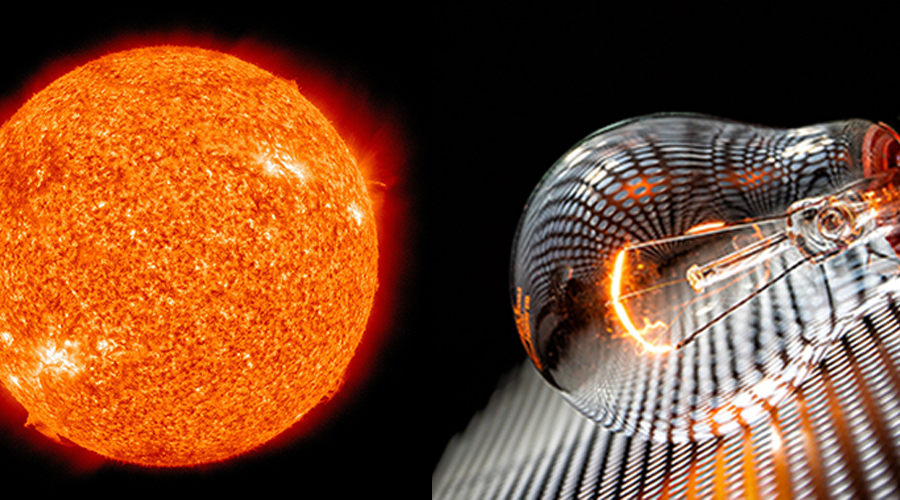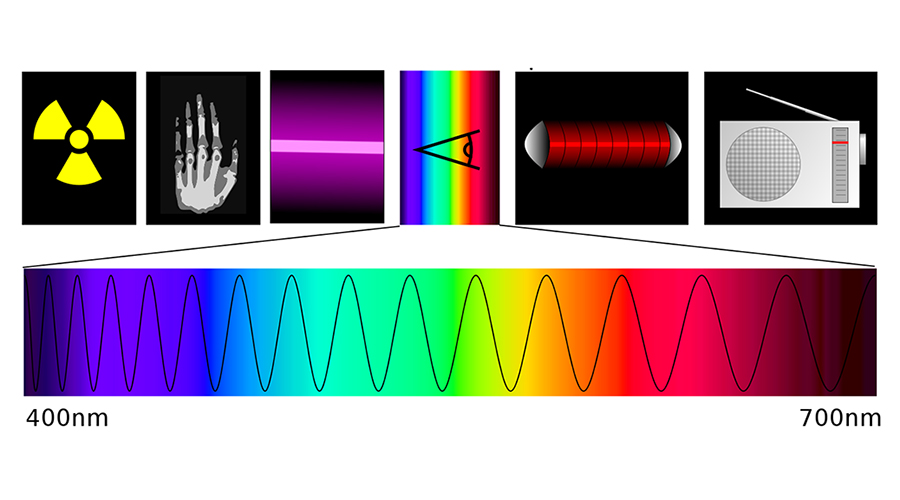
LIGHT – what is it?
How light is created and why we see it
GENERAL INFORMATION ABOUT THE LIGHT
Light is life – it surrounds us, always and everywhere!
We orient ourselves on the day-night rhythm, the seasons and, of course, the artificial lighting in our surroundings. Without the invention of artificial lighting, we would probably be in a lost position today. Thank Edison!

WHERE DOES LIGHT COME FROM?
In order to understand, we first have to look at how it is created and how it works.
Light is created by energy conversion. In the sun, for example, our largest natural light source, hydrogen atoms fuse to form helium. Under the emission of light and heat. In a conventional incandescent lamp, the wire is made to glow by means of a current flow, here too heat and light are produced. With LED lighting, the radiation is based on the principle of electroluminescence from a semiconductor crystal.
LIGHT PHYSICAL – QUITE SIMPLE
It’s both waves and particles. The properties are always composed of both. Reflection and refraction can be explained by both waves and particles, diffraction and polarization only by particles. This is very complex and we are not Einstein’s, who was awarded the Nobel Prize for the discovery of the photoelectric effect. The only important thing for us is that we need the wave properties of light for artificial lighting.

OPTICAL LIGHT
The visible part of the light moves between 400 and 700 nanometers, so it is relatively limited! The ultraviolet radiation lies below 400nm, i.e. in the short-wave range, up to the X-rays. In the long-wave range above 700nm, we speak of infrared light and microwave radiation.

WHAT WE PERCEIVE
Light passes through our pupil to the retina at the back of the eye. There are receptors that catch it. The so-called rods and cones. The rods are responsible for light-dark contrasts, the cones for the perception of colours. We have about twice as many rods as cones. As soon as the light hits these cells, biochemical reactions take effect, electrical impulses are transmitted to the brain via the optic nerve. The cones only work well with sufficient lighting, they are much less! Therefore we see fewer colours in the darkness and the twilight.
The proverb “All cats are grey at night” is no coincidence.
The human eye is best equipped for the medium wavelength around 550nm, the cones for the green perception are clearly in the majority. Therefore we also find the colour “green” calming and pleasant, we don’t have to strain to absorb and process it. It also occurs most frequently in nature in all mixtures and gradations.

Processing in the brain
Once all the information has arrived in the brain, the real work begins. Brightness and colours are interpreted and evaluated. If necessary also adapted and “improved”. The older we get, the worse these processes work, i.e. we need more artificial lighting. At the workplace, for example, or while reading. For this reason, the EU Workplace Directive also includes an effort to indicate good illuminance levels for various activities. These are pleasant for the respective activity in order to support the work. A surgeon needs completely different lighting than a baker or a salesman. The International Commission on Illumination in Vienna also conducts research on this subject and provides recommendations and guidelines. The influence of our perception of colours and light on our well-being and even on everyday decisions is not to be ignored and, above all, not to be underestimated.

And for every requirement there is the right LED lighting and the right LED illuminant in the SEGULA online shop. Ask us, we are there for you!